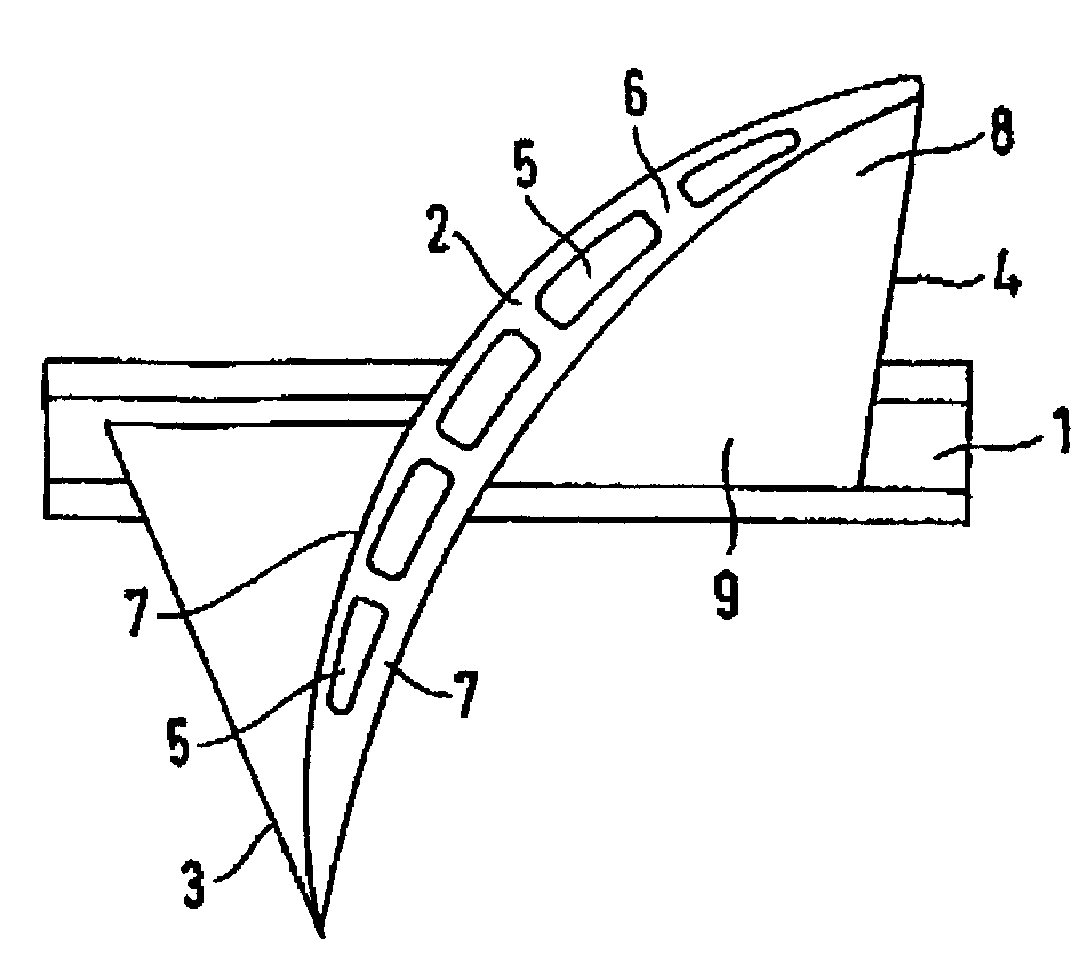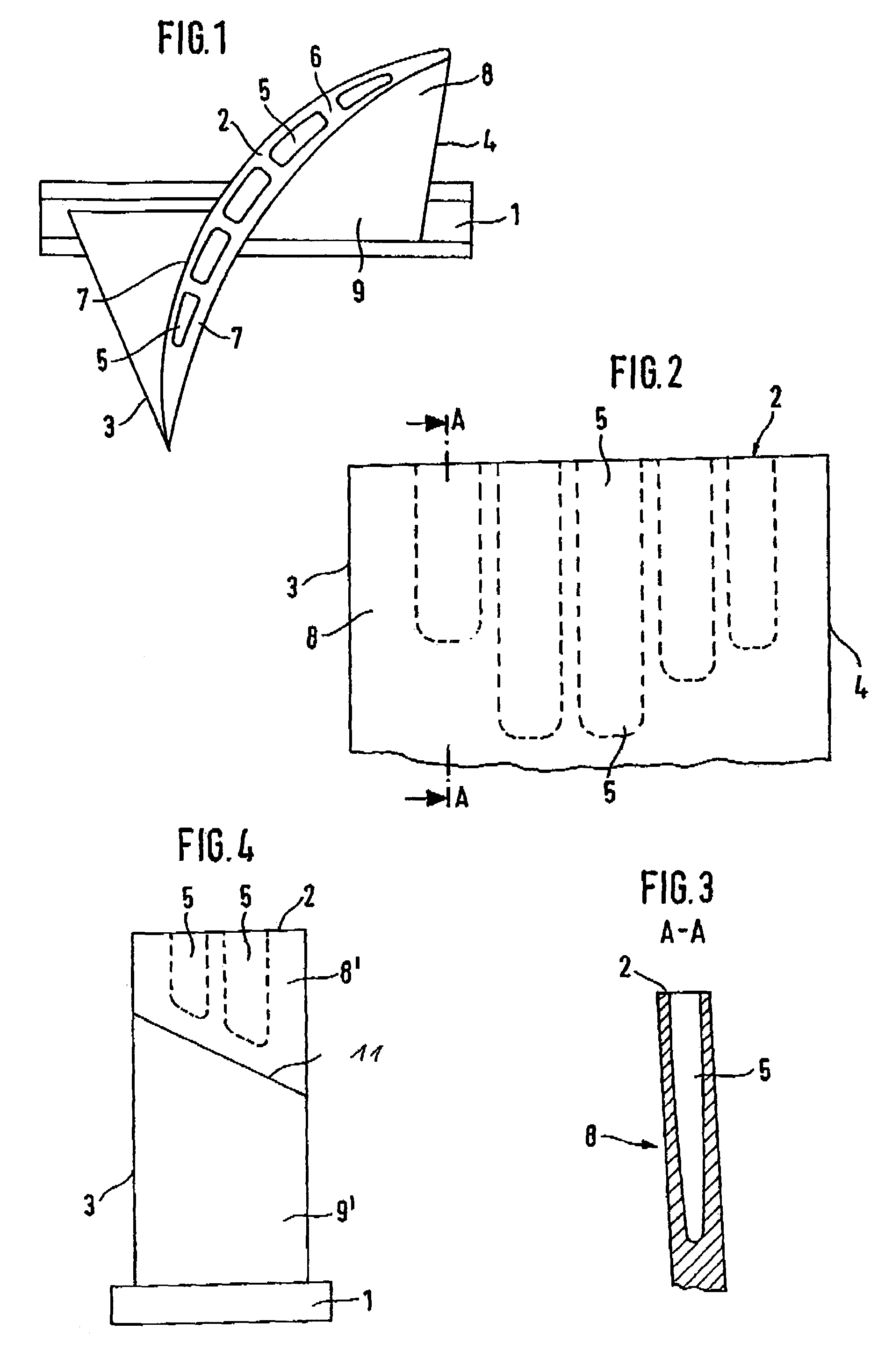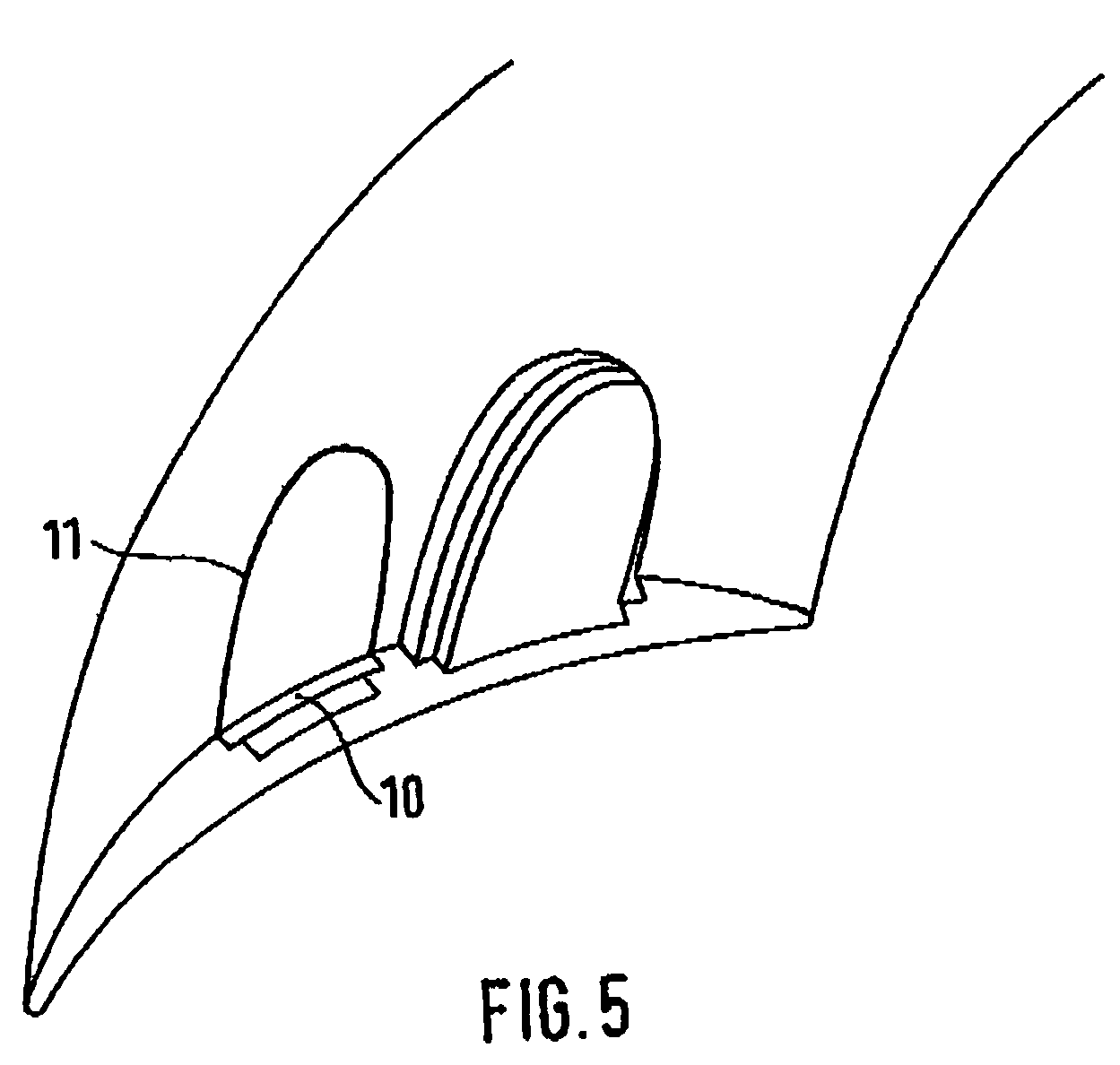Fan blade for a gas-turbine engine
a gas-turbine engine and fan blade technology, which is applied in the field offan blades, can solve the problems of increased cost of these blades, increased weight and additional costs, and high mechanical load, and achieves the effect of satisfactory high safety requirements, easy and cost-effective manufacturing
- Summary
- Abstract
- Description
- Claims
- Application Information
AI Technical Summary
Benefits of technology
Problems solved by technology
Method used
Image
Examples
Embodiment Construction
[0018]This detailed description should be read in conjunction with the summary of the invention above. The titanium fan blade shown in FIG. 1 comprises a blade root 1 and a blade tip 2. It has a leading edge 3 and a trailing edge 4. Arranged in the upper third of the fan blade, the blade tip portion 8, are cavities 5 which start out from the blade tip 2 and which are separated by reinforcing ribs 6. The reinforcing ribs 6 and the thickness of the remaining blade wall 7 ensure the stiffness of the fan blade and the required shear stress transfer. The cavities 5 have an essentially rectangular cross-sectional shape. Other shapes, for example round or oval, are also possible. As is shown in FIGS. 2 to 4, the cavities 5 are situated only in the tip area, or approximately in the upper third of the fan blade, with the remaining area, the blade root portion 9, being solid. The contour of the longitudinal axis of the long cavities 5 conforms to the shape of the fan blade. For example, the l...
PUM
 Login to View More
Login to View More Abstract
Description
Claims
Application Information
 Login to View More
Login to View More - R&D
- Intellectual Property
- Life Sciences
- Materials
- Tech Scout
- Unparalleled Data Quality
- Higher Quality Content
- 60% Fewer Hallucinations
Browse by: Latest US Patents, China's latest patents, Technical Efficacy Thesaurus, Application Domain, Technology Topic, Popular Technical Reports.
© 2025 PatSnap. All rights reserved.Legal|Privacy policy|Modern Slavery Act Transparency Statement|Sitemap|About US| Contact US: help@patsnap.com



